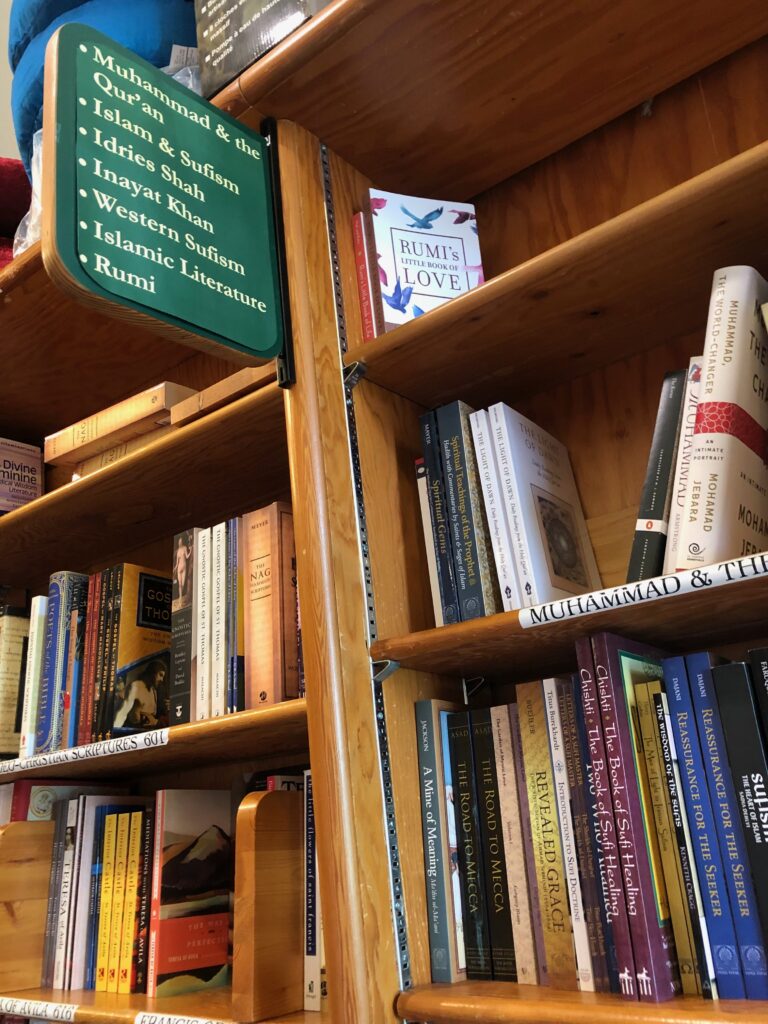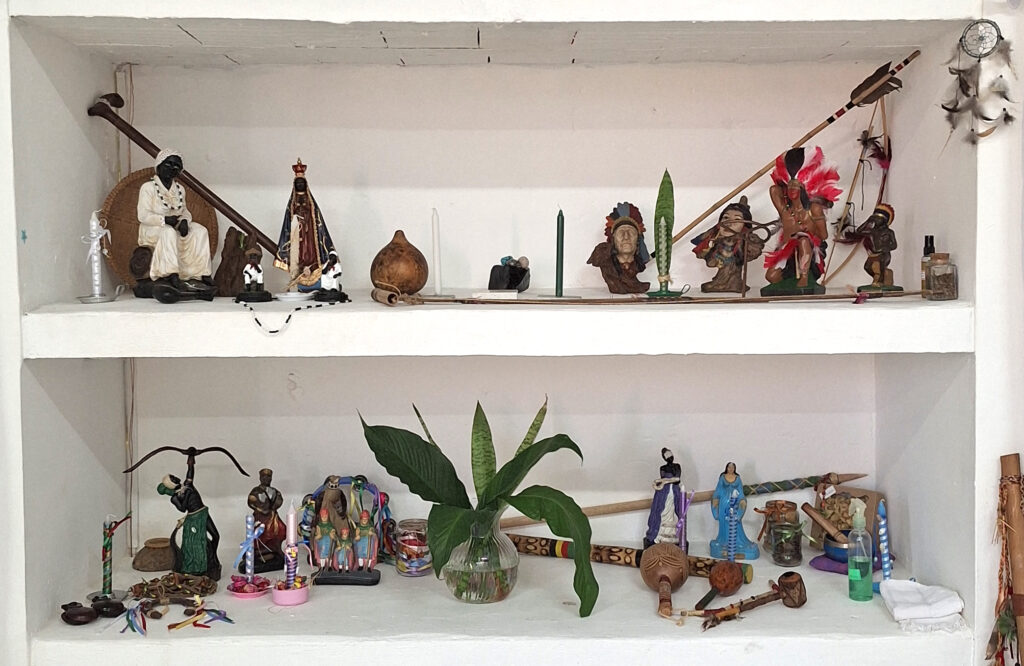By Paul Stoller

Farkey hulamzan jeje go banda ra
Even at rest the donkey has a burden on its back.
–Songhay proverb
One morning during ethnographic fieldwork in Tillaberi, Niger, a Hauka spirit in the body of a medium strutted into Adamu Jenitongo’s dune top compound. This Hauka, one of dozens of loud and boisterous spirits that represent the colonial period in Niger’s history, sought out one of Niger’s most renowned healers, a man who graciously invited me to sit with him. Like all Hauka spirits in the bodies of their mediums, the spirit groaned, moaned, and provoked convulsions in the medium’s body. Saliva frothed from the medium’s mouth.
“Tu me connais? Do you know me? Tu me connais?” the spirit said.
“I know you,” Adamu Jenitongo said in a soothing voice. He placed the open palm of his left hand on the medium’s shoulder. “I know you.”
He softly rubbed the medium’s shoulder.
“I know you,” he repeated.” Gradually the spirit calmed itself in the medium’s body. The convulsions slowly transformed to twitches. The moans and groans gave way to heavy breathing, which soon shifted into normal sequences of breath. A few moments later, the medium opened her eyes. A smile creased her face as she turned to face Adamu Jenitongo.
“Thank you, Baba.”
“Your spirit is not yet settled in your body,” he told her. “It takes time.” He slowly stood up. “Wait here a moment. Ay go ka”( I am coming back).
The old man walked to his spirit hut, a conical structure fashioned from sticks and thatch, and emerged moments later with a small cloth pouch, which he gave to the woman.
“Put three measures of this medicine in your morning drink. Continue doing it every morning until none is left. The powder will help to calm your Hauka. It will help you sleep and will bring you peace.”
The woman stood up. “Thank you again, Baba,” she said as she walked away.
++++
This scene was not an un unusual event in Adamu Jenitongo’s compound. A distressed client—a medium in an uncontrolled episode of spirit possession—appearing in the healer’s compound. The healer, who had learned about the world of spirits, seemed to know exactly what to say and what to do. His seasoned efforts, which involved social connection and what anthropologist David Napier (2021) would call reinforced social trust, calmed his visitor’s embodied spirit. As a result, she was able to re-enter the everyday routines of village life. The medicine she was given would restore balance to her dual lives in the spirit and social worlds.
How did Adamu Jenitongo manage to calm the powerful Hauka spirit in the woman’s body? What had brought him to this path? How had he become a renowned healer?
Adamu Jenitongo was a sohanci, a great healer who came from a centuries-old genealogy of men and women—all descendants of Sonni Ali Ber, the 15th century sorcerer-king of the Songhay Empire. From the 15th century to the present, Sonni Ali Ber’s descendants have conveyed the centuries-old healing knowledge and practices to their sons and daughters. Jenitongo Seyni, Adamu Jenitongo’s father, passed this healing knowledge on to Adamu who passed it on to his son Moussa, who will pass it on to his eldest son or daughter. Healing knowledge and practice, however, comes with an existential burden—the healer’s burden. It is evident that not every descendant of Sonni Ali Ber has the psychological resilience to take up the healer’s burden, a path in life that is often filled with anxious care, jealousy, betrayal, sadness, sickness, and death. Healers like Adamu Jenitongo often have many children and grandchildren. How do they decide who will succeed them? How do they decide which child has the character to devote her or his life to the service of others?

++++
Here is an example of how healers are selected among the Songhay people.
As a 90-year-old healer lay on his death bed, he asked his oldest son to summon all of his grandchildren—descendants of Sonni Ali Ber. The next morning 11 children, girls and boys, ranging in age from 8 to 14, gathered around their grandfather’s bed. The old man greeted them warmly and chatted with them. Then he stated his reason for requesting the visit.
“Get up early tomorrow morning,” he told them, “and go into the bush to see if you can find the bark of the kobey tree”.
The next morning, the children, carrying burlap satchels, left the village and walked toward the bush, the uninhabited space where trees and shrubs grow, where powerful spirits are said to reside. At midday they came back and went to see their grandfather. The old healer praised them for their efforts. Most of the children brought back the barks of other trees. In recognition of their labors, he gave each of them a handful of dried dates. Two of the children, a boy and a girl, brought back the actual kobey bark which, as the old healer knew, was hard to find.
The old man asked them how they had gathered the kobey bark.
“I found the tree and peeled it off the tree trunk, Baba,” the boy said.
“You have a very good eye.” He gave the boy a bag of dates.
The old man turned to his granddaughter. “And how did you gather the bark?”
“Baba, I found the tree and asked it to forgive me for taking its bark. Then I peeled off this piece,” she said, handing it to her grandfather.
The old man held the piece of bark in his open palm. “This bark comes from our ancestors.”
He took hold his granddaughter’s hand and looked at her. “Because you have found this special bark and have shown respect for the trees that have given us much, I think you can be trusted with the power of the bush. Your father will teach you how to tap that power. One day you might become our spiritual guardian.” The girl remained quiet.
“The healer’s path,” her grandfather continued, “is long and hard. Even at rest, the donkey has a burden on its back.”
++++
I have long studied the healing practices of the Songhay people of Niger and Mali. From the time that Adamu Jenitongo invited me, a young anthropologist, to sit and listen to him to my days as a teacher, scholar, and cancer patient, healing practices have shaped my life and work. Many years ago Adamu Jenitongo asked me to recount his story so that people might learn about the wisdom of Songhay elders. In the ensuing years, I have tried to do so. While he was alive, I had the privilege of reading my work to him—a way of asking for approval. I would like to think that he still looks over my work and hope that he and his descendants still approve. In this blog post, I have attempted to use two short stories that might help shed light on what it takes to become a healer.
Who is willing to take on the burdens of healing in a troubled world? Psychiatrists Hankir, Zaman and Carrick (2021: 209) recently suggested that healers are wounded beings whose experience of trauma gives them the power to heal. They suggested that “the recurrent theme in the autobiographical narratives of ‘Wounded Healers’ is that their experiences living with trauma inspired them to become more empathetic, driven and insightful.” In a more poetic vein, the French-Egyptian poet-philosopher Edmond Jabes (1993, 2001) wrote about the human struggle to extract something (plentitude) from nothing (the emptiness of the wound) which, for him, is a poetic way to heal the wound of “being-in-the-world.” In anthropology, Victor Turner’s notion of “affliction” is a prominent factor in the transformation of the healer’s suffering into the healer’s power. As Turner wrote (1982: 202) “affliction is potentially a boon, not merely a present pain, for it is the royal road to ritual eminence in a cult.” (See also Silva 2024 and Turner 1968).
For many years, I have listened to the stories of healers, which means that I have traveled on the healer’s path. I have witnessed their struggles and challenges as they worked with me to save my life and the lives of many others. Since that time, I have wanted to recount their stories. What compelled them to follow this difficult path? In the face of ongoing pain and tragedy, how do they persist? In these difficult times, what words of wisdom can they offer to enable us to heal the world? These, then, are the central questions that I address in my new book project, Healing Stories.

Works Cited
Hankir A, Zaman R, Carrick F. Trauma and the role of the wounded healer. European Psychiatry. 2021;64(S1):S67-S67. doi:10.1192/j.eurpsy.2021.209
Jabes, Edmond 1993. The Book of Margins. Chicago: University of Chicago Press.
Jabes, Edmond 2001. Desire For a Beginning Dread of One Single End. Chicago: The University of Chicago Press.
Napier, David. 2021. Safety is Fatal. Aeon, December 04.
Silva, Sonia 2024. Boundary Situations: An Existential Account of Wounded Healing. In Don Seeman and Devaka Premawardhana (eds). Between Life and Thought: Existential Anthropology and the Study of Religion. Toronto: University of Toronto Press, Pp
Stoller, Paul 2023. Wisdom from the Edge: Writing Ethnography in Turbulent Times. Ithaca, NY: Cornell University Press.
Turner, Victor 1968. The Drums of Affliction. London: Clarendon Press.
Turner, Victor 1982. From Ritual to Theater: The Human Seriousness of Play. New York PAJ
#
Paul Stoller is a Permanent Fellow at the Center for Advanced Study, Friedrich-Alexander-University Erlangen-Nuremberg, Germany. His current research focuses on continuity and change in the healing practices among West African immigrants in New York City. His most recent book, Wisdom from the Edge (2023) underscores the importance of recognizing how the application of indigenous wisdom can help to restore social and ecological harmony in an increasingly turbulent world.
___
CAS-E blogs may be reprinted with the following acknowledgment: “This article was published by CAS-E on July 9th, 2024.”
The views and opinions expressed in blog posts and comments made in response to the blog posts are those of the author(s) and do not necessarily reflect the views and opinions of CAS-E, its founders, its staff, or any agent or institution affiliated with it, nor those of the institution(s) with which the author is affiliated.
___
All pictures are taken by Paul Stoller.








